Some of the links in this post may be affiliate links.
These are not just your grandmother’s plants! Sure, many old ladies are fond of these plants and they grow hoards of them, but African Violets truly are spectacular houseplants. They are very inexpensive, easy to propagate, and produces loads of flowers when you optimize your African Violet care! What more do you want in a houseplant?
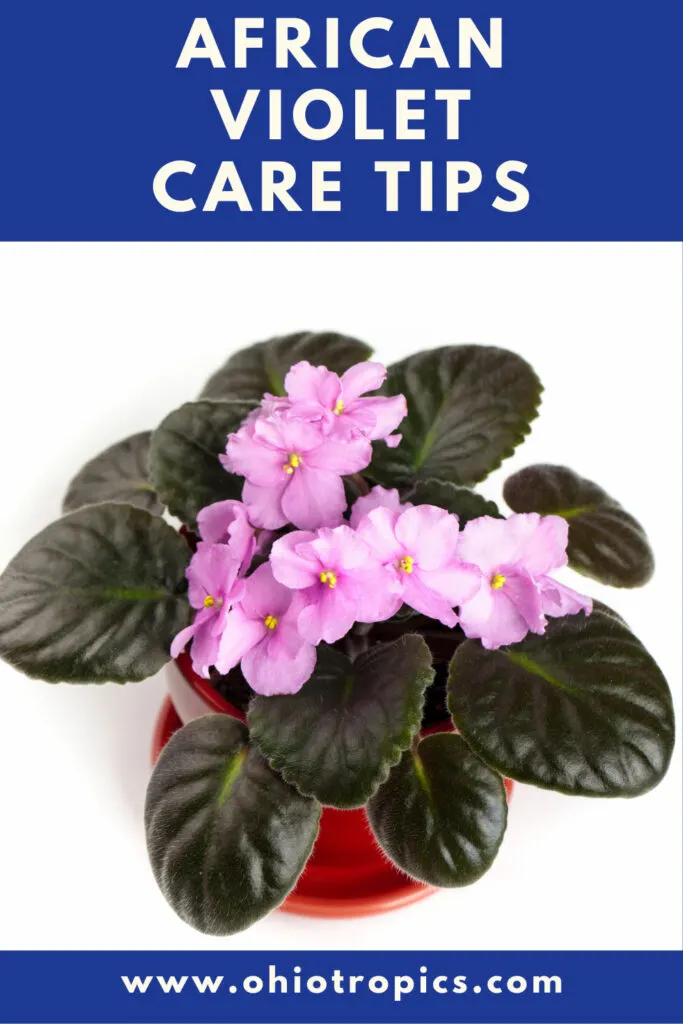
Table of Contents
History & Natural Habitat
African Violets are in the genus Saintpaulia. The genus is named after Baron Walter von St Paul-Illaire, the then governor of German East African, who discovered them in 1892.
Saintpaulia species are native to Tanzania and parts of Kenya, and unfortunately, their habitat is in danger.
Saintpaulia ionantha is the species parent of most modern hybrids.
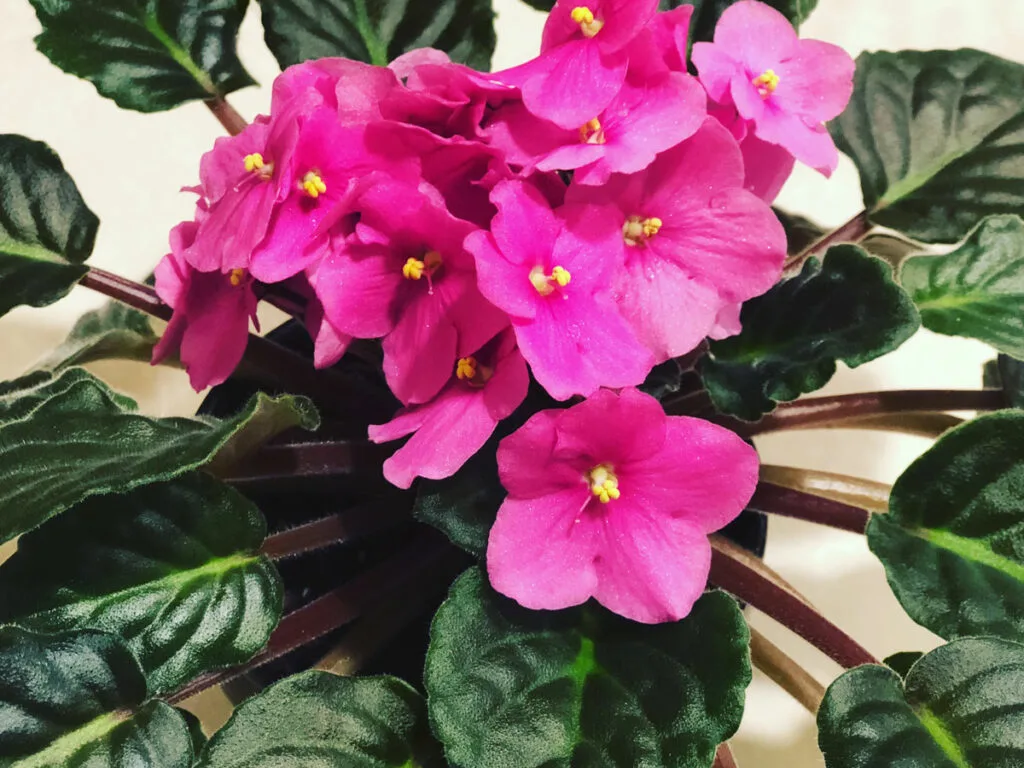
Light for African Violets
Like any flowering plant, light is an especially critical consideration. Flowering plants typically need more light than many plants that are grown for just their foliage.
African Violets love very bright, indirect light and require it in order for them to bloom well.
First off, if you want these plants to bloom, they need to be grown pretty close to a window. Don’t expect great results if you situate your plant in a dark part of your home.
There are plenty of plants that will survive this type of environment, but don’t subject your violet to this type of treatment.
You can also grow beautiful African violets under lights, but this is not the main focus of this post.
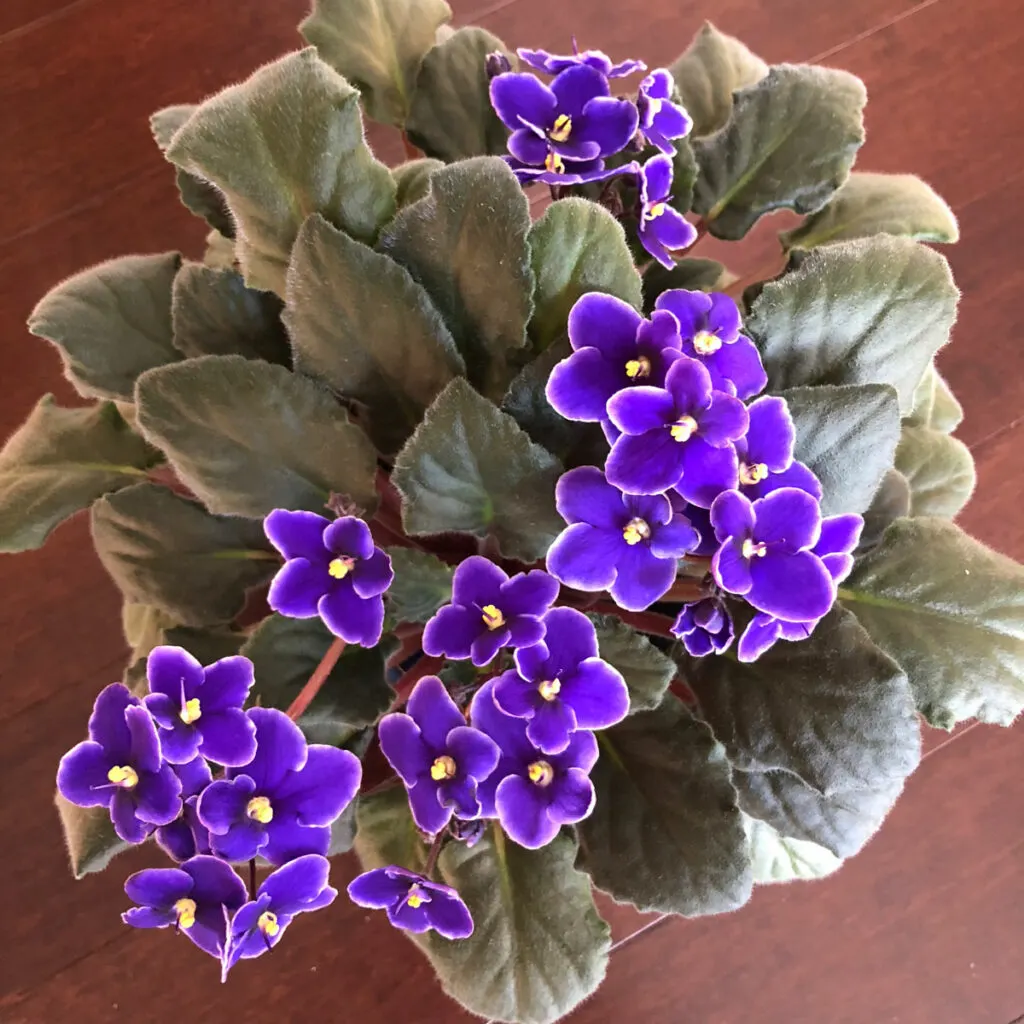
What Window is Best for African Violets?
There are many ways to achieve proper lighting for good growth and blooming.
I grow all of my African Violets in Eastern exposure windows. They are all within 2 feet or so of the windows. They will receive some morning sun and these windows work very well for me.
North windows may also work, but monitor your plants. Growing up, I grew dozens of African Violets in front of a big Northern exposure window.
Every window is different so what works for me, may not work for you! There are many factors that affect the amount of light and intensity of natural light:
- Your geographical location in the world
- The size of your window
- The type of glass on your window
- If you have any obstructions such as trees or walls, etc.
If you have Western or Southern windows, especially if they are unobstructed, it can be much too strong for your plants. You’ll need to use blinds or sheer curtains to diffuse the direct sun otherwise the leaves will burn.
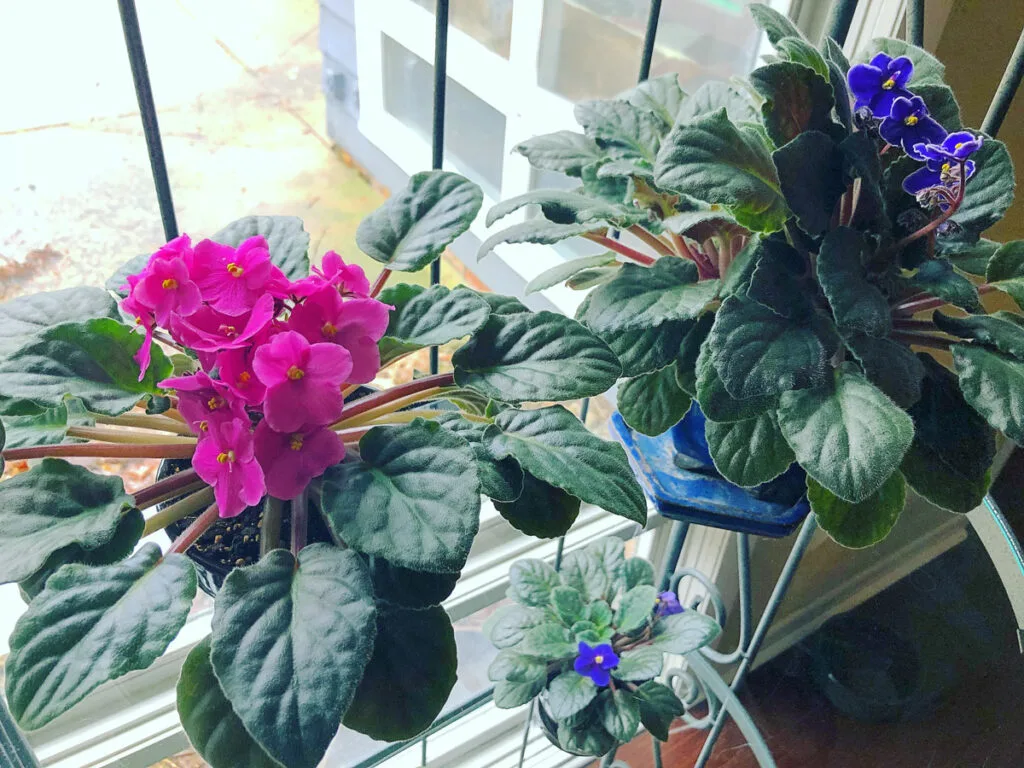
You can also experiment with setting the plant back a little further than you normally would if the space is bright enough.
Also remember that a northern window in the northern hemisphere has no direct sun. If you live in the southern hemisphere, it will be your southern window that receives no sun. They are the reverse.
The bottom line is that if your African Violet does not receive enough light, it simply will not bloom well, so you will know very easily if your plant is happy.
Last but not least, be sure to rotate your African Violet at least weekly so that it can grow evenly. Some people recommend a 1/4 turn every week. I prefer to just turn the plant 180 degrees about once a week.
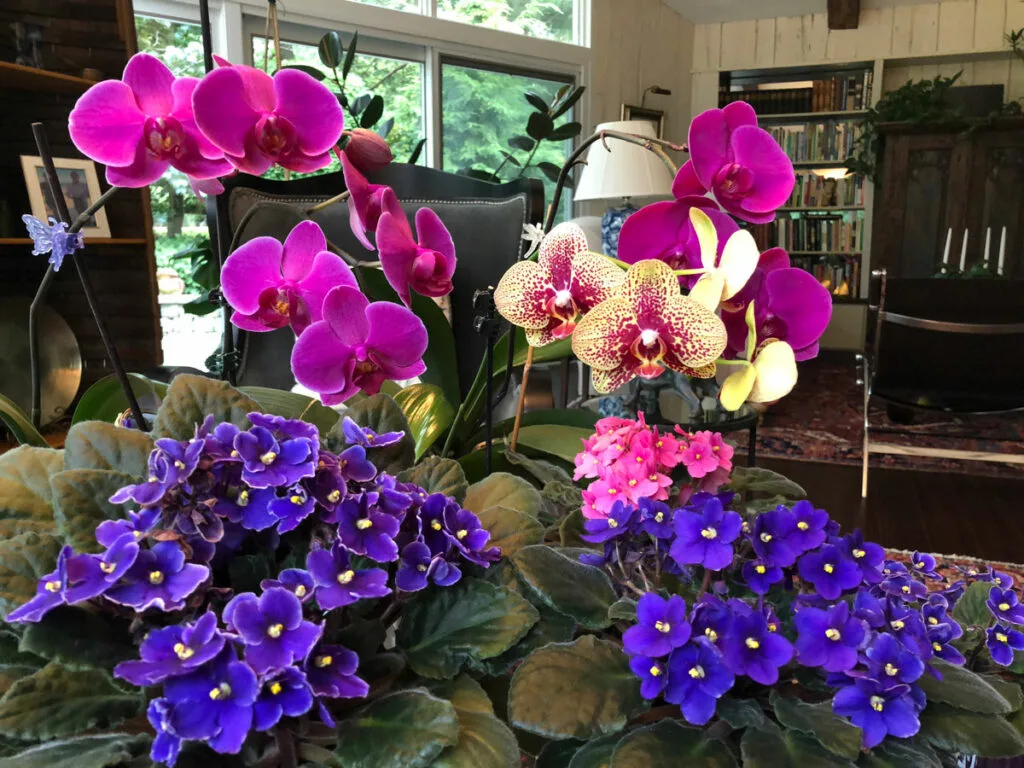
How to Water African Violets
There are two ways that many growers water their violets. Some are adamant about bottom watering, and others water from the top.
I personally have so many plants that I don’t care to take the time to bottom water. I want to water and be done! So I personally choose to water from the top.
Just take care to not add water to the inner crown of the plant in order to avoid rotting.
African violets have very fine, delicate roots. They prefer an evenly moist (not WET) soil. Ideally, I will let the surface of the soil just barely dry out before watering again.
Always use tepid or slightly warm water and NEVER cold water. Cold water can shock the plant, and if cold water gets on the foliage, it will cause unsightly spotting.
Be careful not to let all of the soil completely dry out. If a plant has completely dried out, you will notice it will start to look droopy.
Every time this happens, it will weaken the plant, so take special care to provide proper moisture levels for your African Violet.
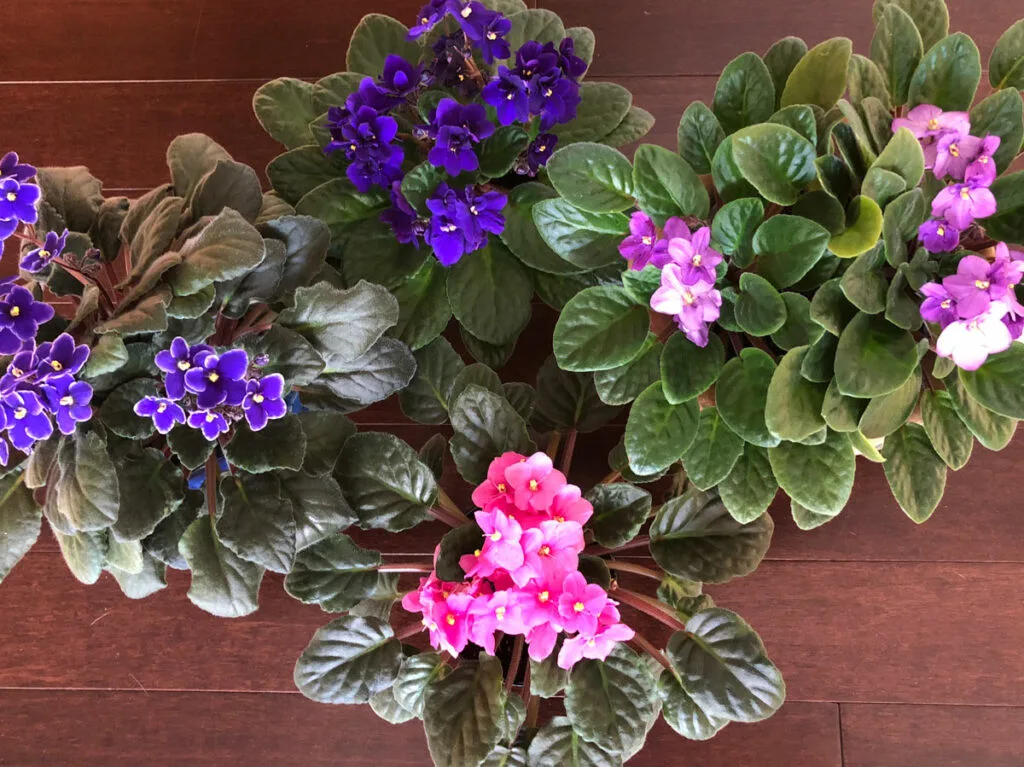
Fertilizing your African Violet
If your plant as good light, you could get away with not fertilizing. However, in order to truly have stunning violets, you really must fertilize!
I’m currently using an Optimara African Violet fertilizer that is 14-12-14 with great results and is available on Amazon. The growth and profusion of flowering is amazing with this fertilizer.
The 3 numbers that you see on any fertilizer label indicates the proportion of Nitrogen, Phosphorous and Potassium, or the NPK values. What do these mean?
Nitrogen (N) is mainly responsible for leafy growth on plants.
Phosphorous (P) is necessary for both root growth and for flowering. Often times if you see a “bloom booster” fertilizer, the middle number (Phosphorus) is usually much higher than the other two.
Potassium (K) helps with the plant’s disease resistance, as well as assists with overall biological functions.
If you’ve let your plant dry out completely, I would recommend not fertilizing because it may damage the fine roots. Give the plant a good soaking, and skip the fertilizing for another time.
Lastly, I like to fertilize with every watering. Of course if you use this method, you will need to use a more diluted strength. Read the fertilizer instructions carefully and fertilize accordingly.
If you’d like to read about fertilizer recommendations for other plants, check out my fertilizer blog post.
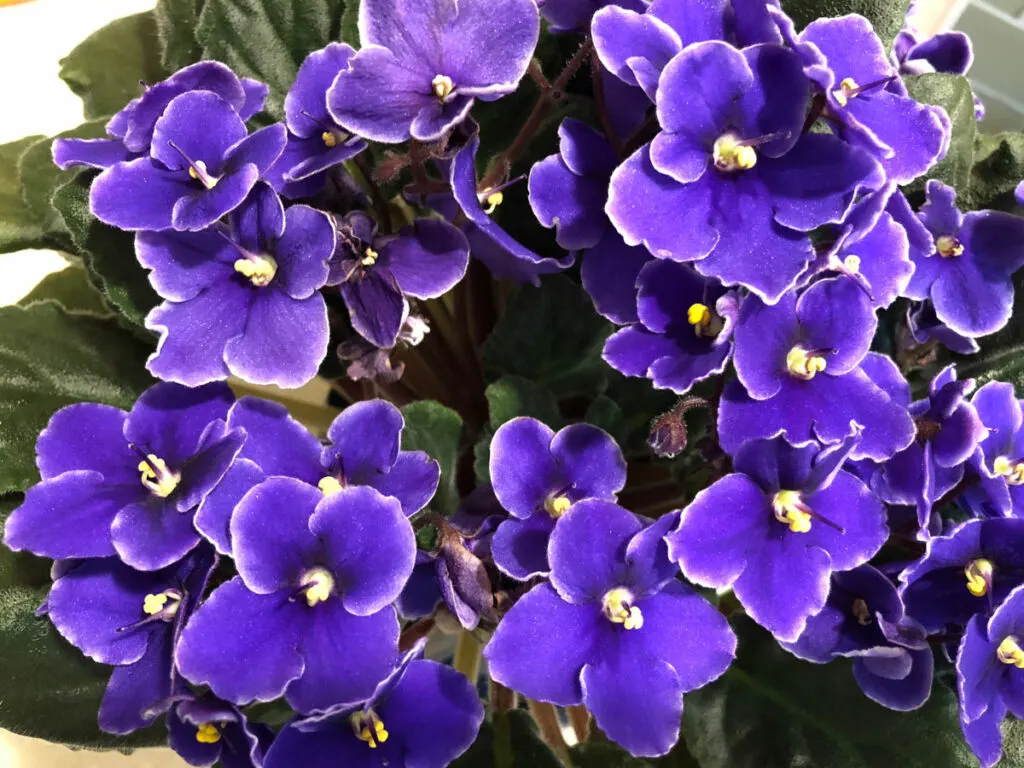
African Violet Potting Media
I would recommend using potting mixes specifically made for African Violets. Don’t use a standard houseplant potting mix because it may be a little heavy for your violets.
African Violets prefer a light, porous potting medium and they normally contain a good amount of peat moss.
I sometimes make my own blended potting mixes for certain plants, but I keep it easy with my African Violets and purchase pre-packaged African Violet potting mix.
The following are all fantastic African Violet potting blends, available on Amazon, and I recommend any of them:
Espoma Organic African Violet Potting Mix
Hoffman Organic African Violet Soil Mix
Miracle-Gro African Violet Potting Mix
Plastic vs. Terra Cotta Pots?
Regardless what type of pot you choose, remember that African Violets like to be grown in smaller containers. Avoid the use of deep pots as they prefer shallower pots.
If you tend to “overwater“, you could try and grow them in terra cotta pots. However, fertilizer salts tend to build up more in terra cotta pots, and this can harm the fine roots of African Violets.
Also if the salts build up on the rim of the pot, the tender, succulent stems of the plant will be damaged.
I prefer either plastic or glazed ceramic pots for my violets, but it is purely personal preference.
Temperature for African Violets
African Violets are very tender and are definitely freeze babies!
An ideal temperature would be 65F to 75F.
Avoid any cold drafts. Temperatures in the 50F range can be detrimental for African Violets. Once I had an African Violet growing in our sunroom before we replaced our windows, so it was cooler (low 60F) and drafty.
The plant did not do very well. Once I moved it to a warmer room with equally good light, it started thriving.
Propagating African Violets
There are three common ways to propagate African Violets:
African Violets will produce suckers at the base of the plant. Once they are big enough, you can gently pull them out and pot them up.
Another way to propagate is to break a leaf off with part of its stem. You can then place the bottom part of the stem in water, or insert it directly into soil.
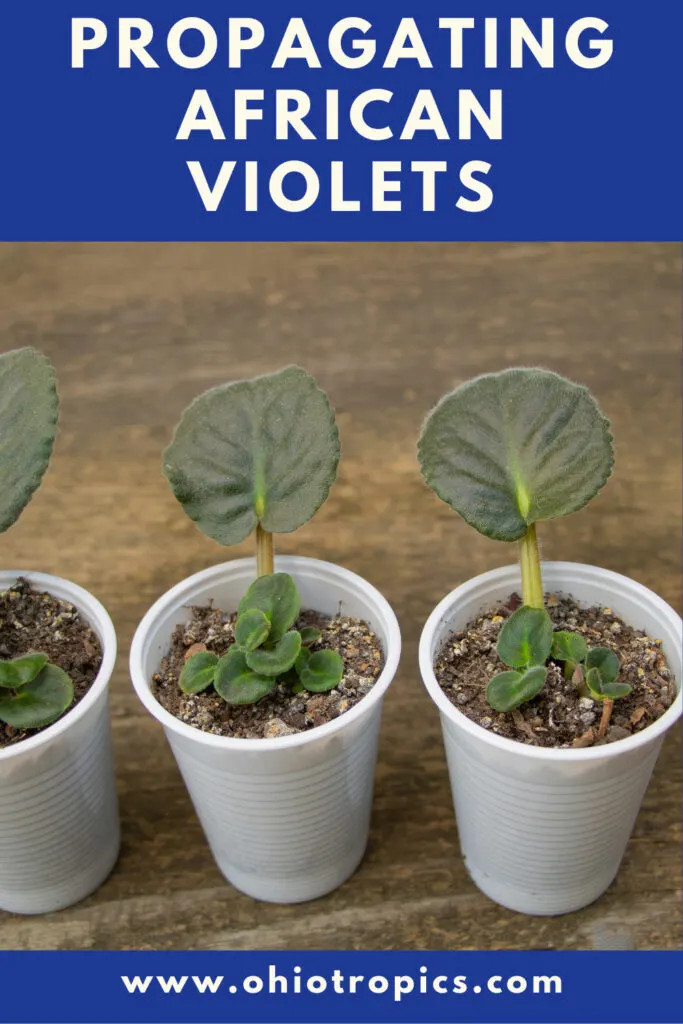
New plants will grow out of where the stem was cut. There may be multiple plants so you may need to separate them out once they are big enough.
African Violets grow best if you leave them as one crown, versus multiple crowns in the same pot.
The least common way to grow these plants is from seed. It is very tedious because the seeds are very tiny, and they require light to germinate.
Many years ago, I hybridized own African Violets and harvested and sowed my own seeds. It was fun to see the resulting plants and flowers!
But beware! This will result in more plants that you will know what to do with. So unless you have ample space or plan to give them away, you may want to stick with the other two methods to propagate.
If you love water propagation, don’t miss my post on the best houseplants to propagate in water.
Frequently Asked African Violet Questions
How do I get my African Violet to Bloom Again?
Light is the most important factor in getting your plant to bloom again. A happy plant will be in almost continual bloom.
Move your plant immediately in front of a window for best results. Eastern facing windows are great. Windows with no direct sun at all will also work, but they should be immediately in front.
Be sure to fertilize for best results as well.
When to repot African Violet?
Repot anytime you need to, African violets can grow pretty quickly. If you notice that your plant is drying out much most quickly than it used to, and the roots are matted on the surface of the soil, it is definitely time to repot.
How often do you water an African Violet?
African violets should never be watered by a calendar. Depending on your conditions, everyone will have a different watering frequency, and it can even vary throughout the year.
So how do you know when to water? Simply feel the surface of your potting mix. African violet like a pretty evenly moist potting mix, so when the surface of your soil feels dry, it’s time to water.
African violet care is truly very easy once you understand what they like. Do you have any African Violets? Comment below with any questions!

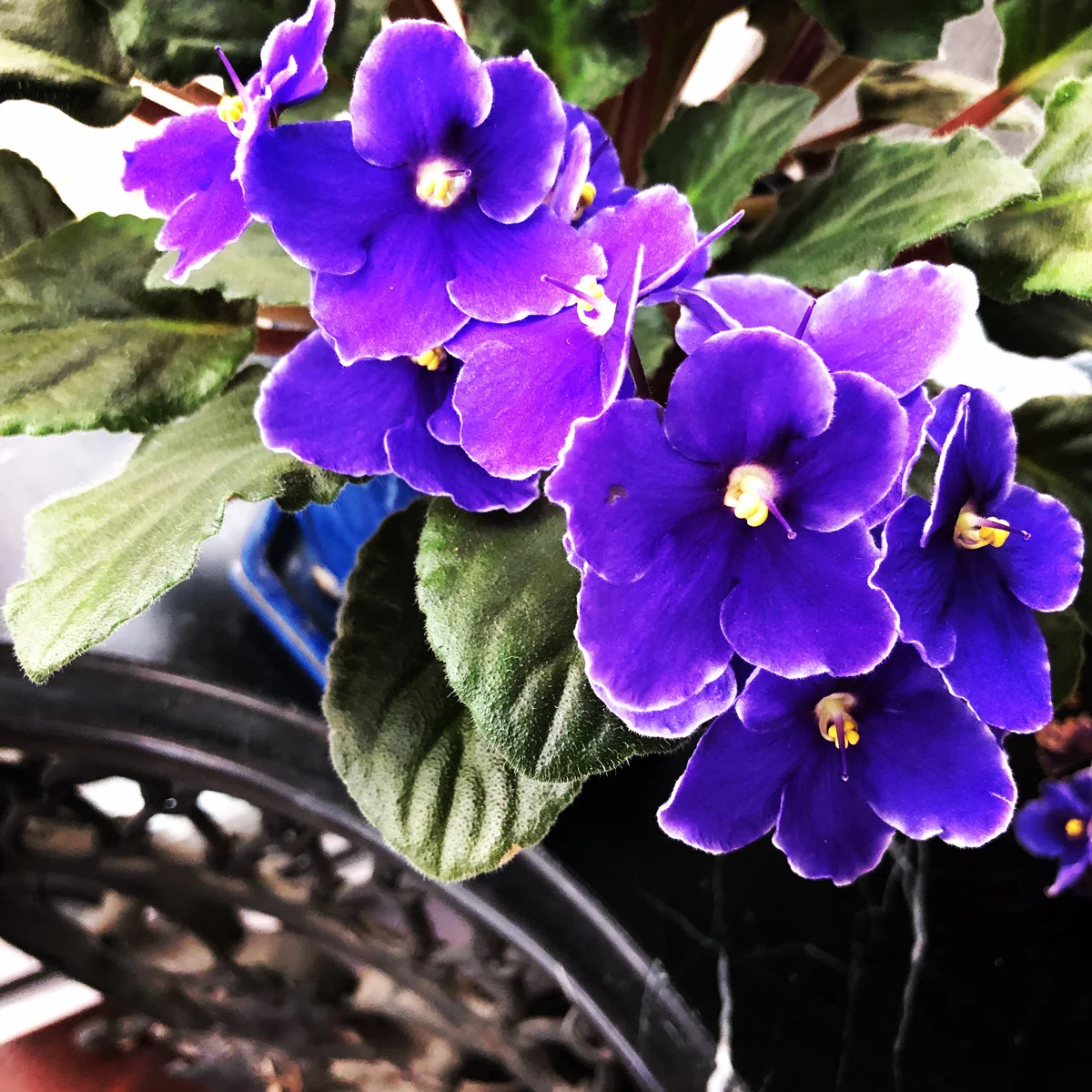
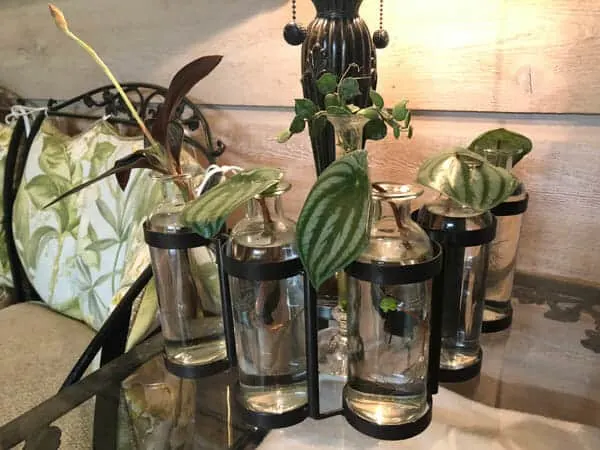
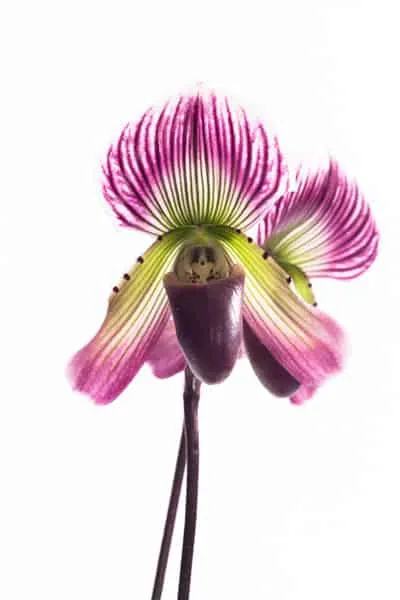
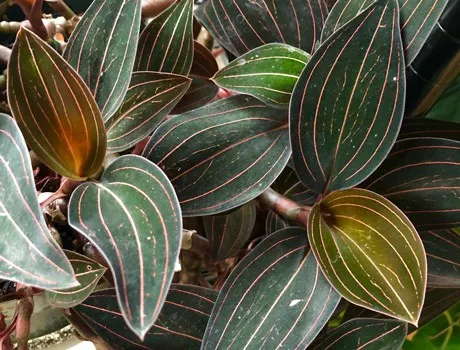
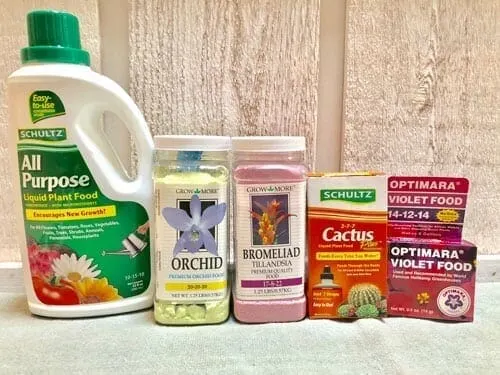
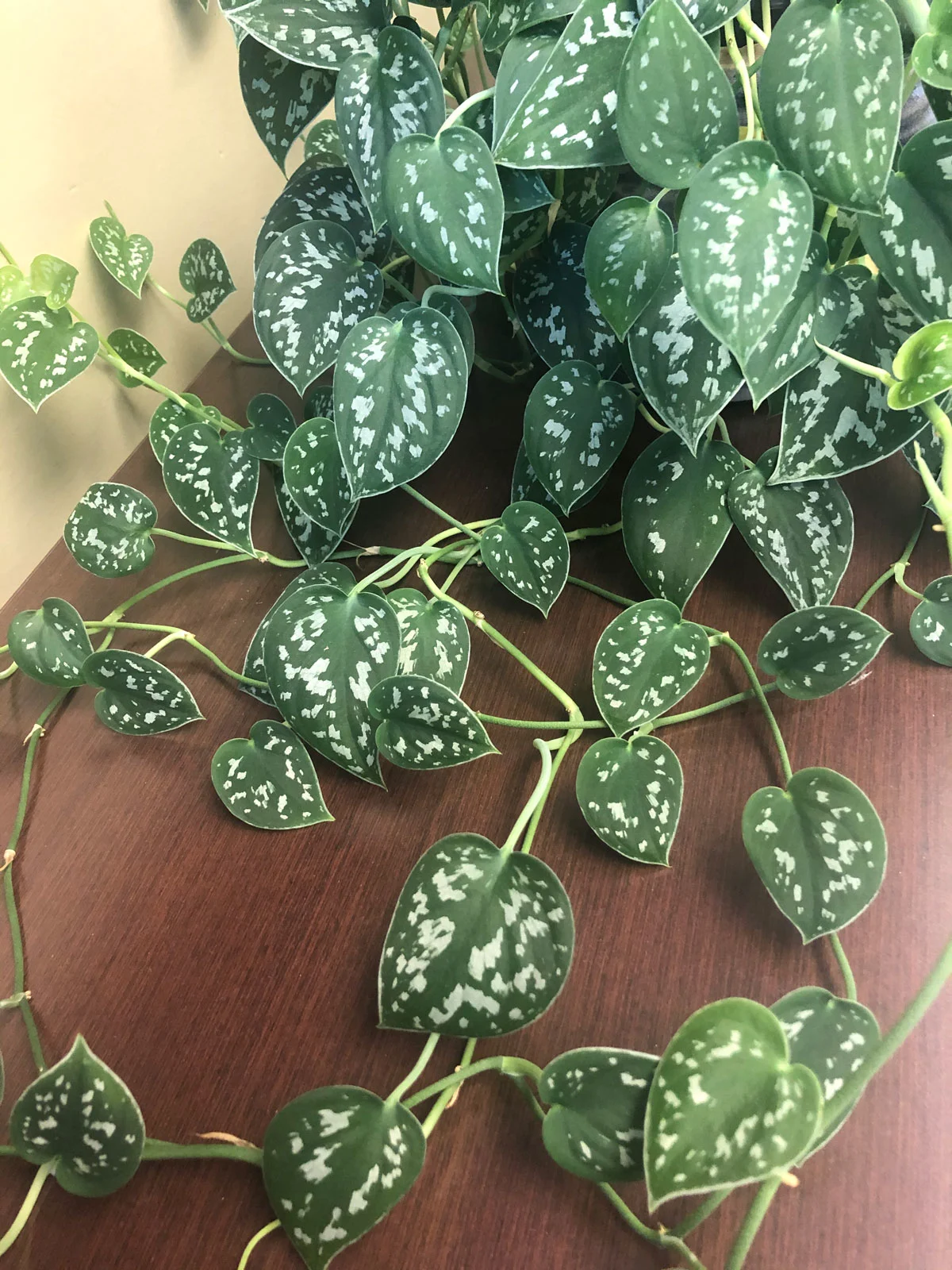
Maureen
Friday 1st of September 2023
I have an African Violet that belonged to my daughter while she was in college in the 1990s. It got a white fungus which would not go away so I took several of the leaves and put them in water. It was a looooong process but I ended up with 3 good plants and now one of them, in an east window, is covered with flowers. I also have purchased some of the self watering pots which have worked well.
Raffaele
Friday 1st of September 2023
Ah yes, self-watering pots are wonderful for African violets! They hate to dry out so they're a wonderful fit for this :-) I'm glad you were able to remedy the fungus!
Mary Burke
Saturday 24th of June 2023
It’s been @2-2 1/2 months since potting 3 leaves rooted in water. The leaves have grown in size but no additional sprouts have appeared yet. I had them in a north sill, (live in North Central Texas), no sun just indirect light and recently moved them to a northeast sill with frosted glass. May get some morning exposure. Anything else I should do other than fertilize?
Raffaele
Sunday 25th of June 2023
Hi Mary! Just give them a little more time. You should start to see baby plants soon :-) As long as the leaves are in good shape, you're fine.
Wendy Lucido
Thursday 25th of May 2023
My African violets are growing and thriving, 3 bloom vigorously, but a lot of them grow but do not flower. Any suggestions?
Raffaele
Friday 26th of May 2023
Hi Wendy! For the ones that are not flowering, are they in the same spot as the ones that are flowering? Have you been fertilizing?
Audrey
Friday 7th of October 2022
Thank you for the great information. I’m wondering if African Violets would do well in a wicking pot - a two chamber “self watering” pot with a cotton wick that draws moisture into the soil continuously. I use them for my prayer plants and maidenhair ferns that also like their soil to remain slightly moist. I have 2 African Violets that were gifts and I’m afraid I will let them dry out too much (I have a couple of times already) if I don't put them in wicking pots. What do you think?
Raffaele
Sunday 9th of October 2022
Hi Audrey! Yes, wicking pots are great for African Violets! As long as you good a good potting mix. I recommend equal parts african violet mix, vermiculite, and perlite.
Dawn
Wednesday 20th of July 2022
Question -itty bitty blk bugs around my violets, know idea what they are
Raffaele
Thursday 21st of July 2022
Hmmm...it's hard to say without seeing a photo. Maybe aphids?